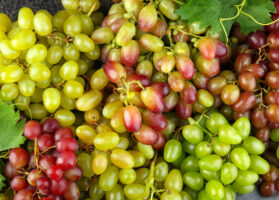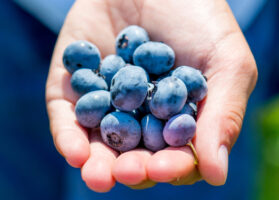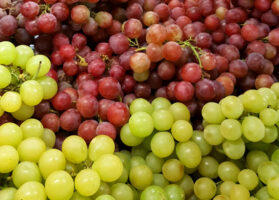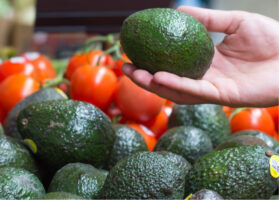Agronometrics in Charts: California En-Route to Hitting Its Second Highest Strawberry Season on Record
In this installment of the ‘Agronometrics In Charts’ series, Sarah Ilyas studies the state of the California strawberry season. Each week the series looks at a different horticultural commodity, focusing on a specific origin or topic visualizing the market factors that are driving change.
The U.S. strawberry industry is primarily located in the southern and coastal areas in California, where strawberries are produced year-round with peak harvest spanning from early spring until fall. The production window for the fruit in this state has now expanded from July to October with higher yielding varieties being grown on decreased acreage. This season, plant development and production cycles were off to a great start; the state’s strawberry production is expected to hit its second highest season on record, extending the peak season well into the fall. The highest volumes are expected from Santa Maria for both, conventional and organic strawberries pending any unforeseen weather events.
The entire state is beset with drought conditions that range from abnormally dry to exceptionally dry. According to horticulture experts, however, as long as the plant is getting 1 to 1.5 inches of water per week with the help of irrigation, the fruit should be able to bear through any precipitation deficit. “California strawberry farmers rely on rain to reduce irrigation for plant establishment, rinse away salts from the root zone, and re-charge water sources used during the dry season. Most of the strawberry crop is planted in the fall, before the season’s precipitation arrives,” says Jeff Cardinale, director of communications for the California Strawberry Commission. Production is primarily being carried out in the Santa Maria, Watsonville and Salinas growing regions, with the Salinas and Watsonville regions on track to continue harvest through the end of October.
Strawberries from California in the US market | From California-South & California-Central

Source: USDA Market News via Agronometrics.
(Agronometrics users can view this chart with live updates here)
Year to date, California strawberry farmers have produced over 1.4 billion pounds of the fruit. Total strawberry acres for 2022 production increased 8% for a total of 40,714 acres. Fall planted acres that are harvested in the spring and summer increased 6.8%. Summer planted acres that are harvested in the fall and early winter increased 13.5%.
During week 40, average pricing was at $21.77 per package. As higher volumes make their way into the market, a dip in pricing could be expected.

Source: USDA Market News via Agronometrics.
(Agronometrics users can view this chart with live updates here)
Although labor, fumigant regulations and restrictions, high production costs including high land values, and unconducive weather continue to be stumbling blocks, the industry is continuing to make headway not only by developing non fumigated production systems such as anaerobic soil disinfestation (ASD) but also by investing in low tunnel production to extend the growing season and improve fruit quality.

Source: USDA Market News via Agronometrics.
(Agronometrics users can view this chart with live updates here)
Written by: Sarah Ilyas






